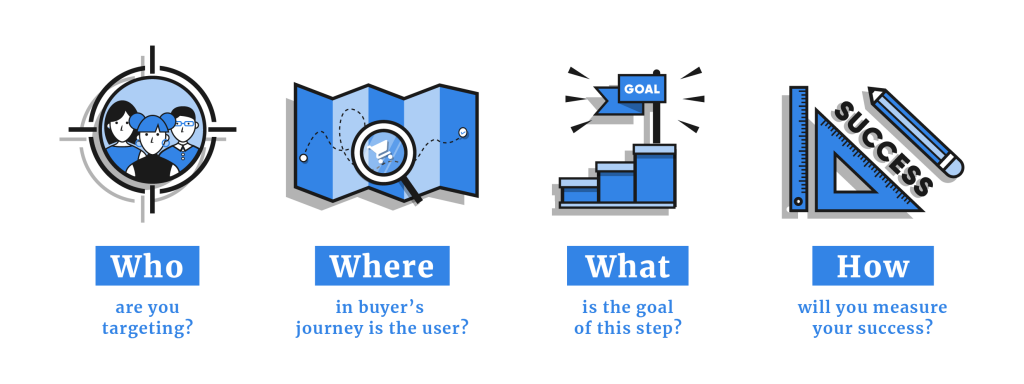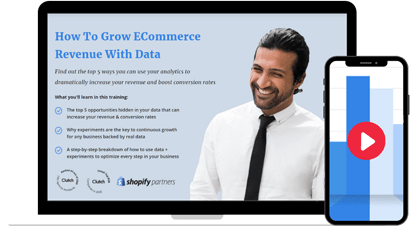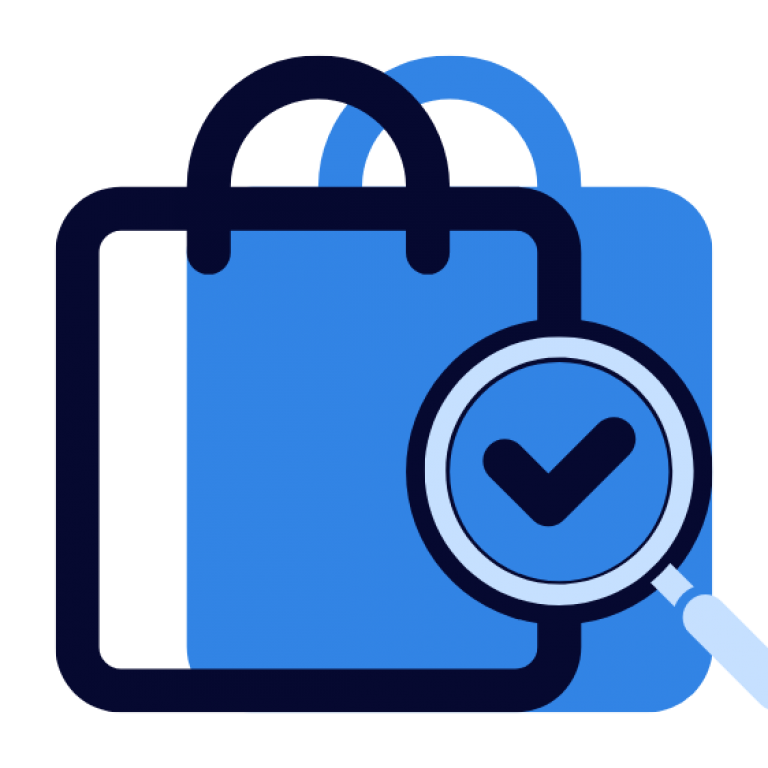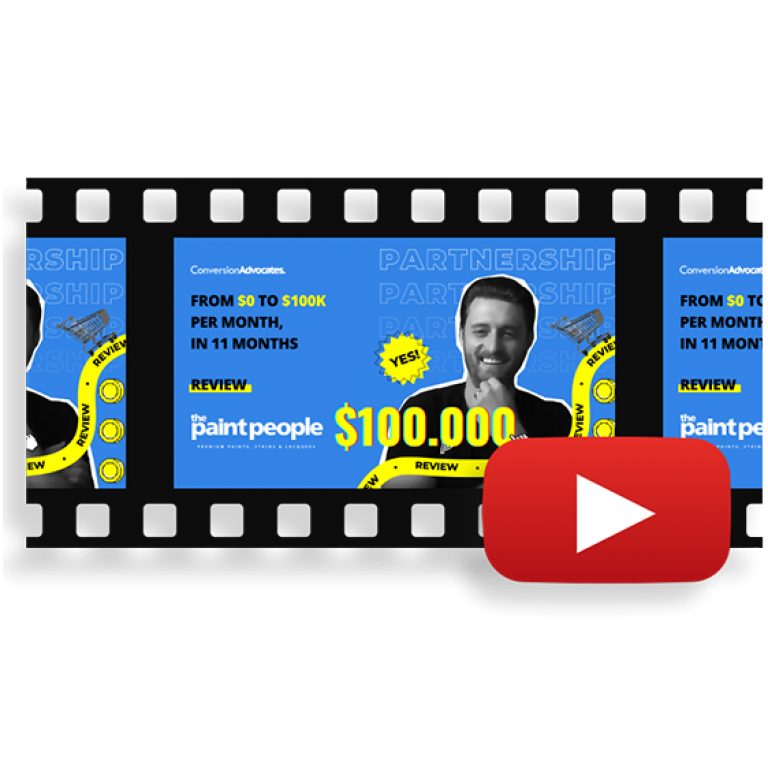a 6-minute read
Creating a successful conversion funnel from scratch can feel overwhelming. If you’re unsure of where to start, not to worry. To help you get started, we’ve created a 10-step omnichannel conversion funnel you can use as inspiration.
Before getting started
Remember that at every step of your funnel you need to answer these questions:

Let’s assume you’ve defined your niche and created your ideal customer persona. Next up, you should find a topic that is relevant and of interest to your target audience. The best way to brainstorm topics is by conducting thorough keyword research and search queries.
Keyword research helps you identify some key terms, but search queries will also help you go a little deeper by identifying common questions around that topic. You can then provide high value by providing expert answers to burning questions.
In this article, we’re going to walk you through the steps with clear examples from a theoretical business; our chosen hypothetical company sells airline tickets to long-haul destinations. Their users are interested in finding the best deals. But how can they attract new leads? What strategy will keep past users coming back? Using discounts and promo codes will likely result in sales spikes, but that only represents short-term success, rather than exponential business growth.
Our 10-step method uses sales/conversion funnels and highly valuable content in tandem to foster long-term growth; let’s dive into how you can apply this to your own business.
Step 1 | Create a High-Quality Piece of Content
The first thing you want to do is create a high-quality piece of content directly related to the topic you’ve chosen. For our example, a good choice would be a blog article covering the top long-haul destinations for the upcoming year.
Be sure to give detail and provide real value to those reading it; it’s crucial to always give value before asking for something in return.
Step 2 | Create a Lead Magnet
A lead magnet is a marketing term for an item or service that is given away in exchange for useful information. Don’t give away your highly-valuable content entirely for free: add it to your website, but offer it in exchange for an email address. Keep in mind that the more questions you ask, the fewer leads you’ll get. Find a balance between getting the right information but not putting up too many obstacles for your audience.
In our example, this would be a good opportunity to ask potential leads for their name, traveling preferences, country of origin, and other useful information. This is the chance to segment the leads and learn more about them so you can offer them tailored content later in the funnel.
Step 3 | Follow-Up Email
A personalized follow-up email is a great opportunity to start building a relationship with users. Keep it brief and to the point, perhaps signposting to a couple of other pieces of content that they might find interesting. This is your chance to make a good impression and leave them with a positive association with your brand.
For the airline ticket company, their follow-up email could be a cheerful note thanking them for reading the blog post, sharing a maximum of two other forms of content, and containing plenty of attractive travel images. You want to send your leads something that is low-effort for them and contains plenty of positive branding.
Step 4 | Social Media Organic Promotion
Create content that will help you promote lead magnets organically. A monthly plan for your social media channels will allow you to use proven formats to your advantage. Your content on every channel should be cohesive and related, so your audience knows what you’re about at every touchpoint. If you’re creating videos, why not cover a topic related to your lead magnet?
For the long-haul destination blog post, share aesthetic photos of destinations mentioned in the guide, reviews of passengers who already visited them, and “discover a perfect destination for you” quizzes. These fun and light snapshots of your lead magnet content will draw people in further. Tease your existing audience and use hashtags to reach new users.
Step 5 | Social Media Sponsored Content
Create a clear and structured plan for sponsored content. What ad formats would be best? Dig into your analytics for past campaigns and make a data-driven decision. If you haven’t got data to fall back on, test a few different options. This is your golden opportunity to make the most out of your high-value lead magnet and reach as many new leads as possible. You can also retarget those who visited the lead magnet page but didn’t take the desired action.
For our travel company example, using attractive images of the destinations mentioned and drawing people in with the lure of high-ticket destination options would likely appeal to the right audience and generate fresh and relevant leads.
Step 6 | Lead Nurturing Emails
Once people download your lead magnet, add them to a lead-nurturing thread of emails. This automated, pre-made set of emails should feel different from your newsletter content. These emails will be sent to your high-value leads and prospects and should feel like you’ve personally written that email just for them. Where newsletters are generic, lead-nurturing emails are tailored to your users’ needs. This is your chance to start building a relationship with your lead.
In our example, if a lead identified a specific area of the world they wanted to visit, you could provide them with guides, deals, and more information on how you can help them to get there. For example, a lead told you that she is a 30-year-old traveler from the US who prefers traveling by boats and trains and wants to visit Europe. Let her know that there is a Venice Simplon-Orient-Express tour, send her a series of emails that include a list of EuroRail centers, suggested itineraries, and a collection of the best deals for traveling from the USA to Europe.
Bonus tip: activate a behavioral email to hit the maximum personalization level. This automated marketing feature will help you personalize your content the most, since these emails are triggered by actions users take on your website. For example, if a lead clicks on deals related to Thailand, an email containing content linked to articles and reviews for Thailand would be automatically sent to that user.
Step 7 | Present a Paid Offer
This step is crucial – and its success depends on your analytical skills. Based on behavior both on the website and in emails, you need to determine for yourself when a lead becomes a prospect. Only when a lead has matured enough can you present them with a paid offer. As ever, this offer should be tailored to their interests.
For the airline ticket seller, this could be an offer to design an itinerary for their ideal destination.
Step 8 | Remarketing Ads
Use paid ads to target people who saw your introductory paid offer but haven’t taken action yet. We would advise testing ads with both gentle and more direct approaches. Retarget them with case studies or customer reviews to show just how successful you are. Let your results speak for you. Your audience is far more likely to trust social proof from their perceived peers than content that has come from you.
The travel company might retarget with glowing stories of adventurous travel in long-haul destinations to show how booking with their company provided customers with the best vacations of their lives. It’s all about proving the value of your services.
Step 9 | Upsell
Once a prospect buys your sample service that was tailored to their interests, such as the custom itinerary we suggested above, it’s time for upselling. It could be purchasing flight tickets and accommodation in our hypothetical case. This is where you’ll start making real money and achieve your original goal. But why stop there?
Step 10 | Re-engage Customers
This is a step most marketers forget. It’s also a crucial step for increasing the lifetime value of your customers. If you aren’t clear on the 5th step of a medium-sized funnel, take a second now to refresh your memory. It is all about re-engaging your customers and nourishing them until they become your unofficial brand ambassadors.
For the travel company, this could be a post-vacation follow-up encouraging them to plan for their next summer, or suggesting similar destinations that they might enjoy.
On a rare occasion, you’ll get lucky and the conversion will happen right away. And sometimes you will be able to use a basic three-step funnel or a happy medium-sized one. At the end of the day, however, the key to long-term conversions is:
- Being good at customer value generation.
- Maintaining a relationship with your leads, prospects, and customers.
- Analyzing and tracking all of the data.
- Experimenting, testing and optimizing based on insights.
These long-term conversions are the ones that will make you real money and promise long-lasting growth for your company. Remember when creating each step of your funnel to refer back to the key questions we listed at the start.
We hope that this ten-step plan sets you on the right path and if you need any further assistance in optimizing your omnichannel funnel, don’t hesitate to reach out. We are always ready to be of service.



